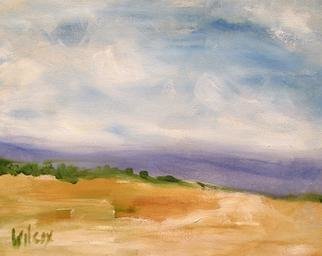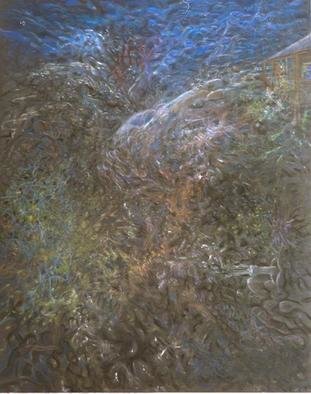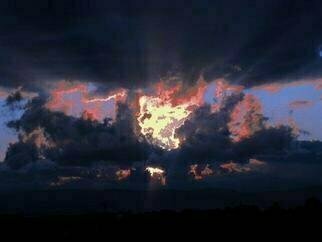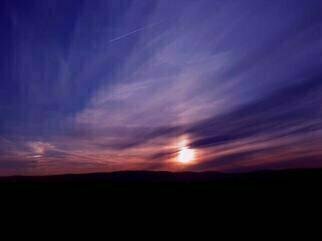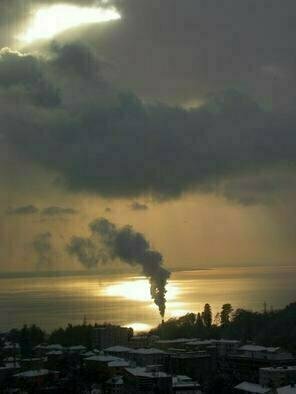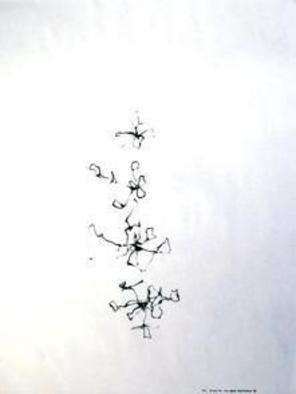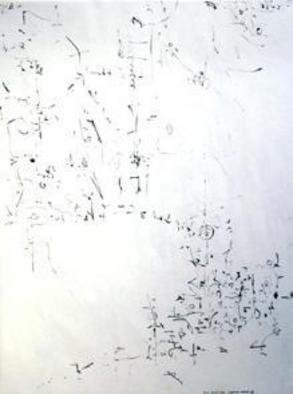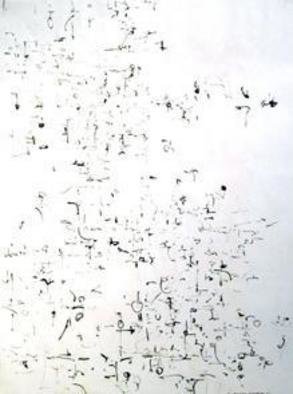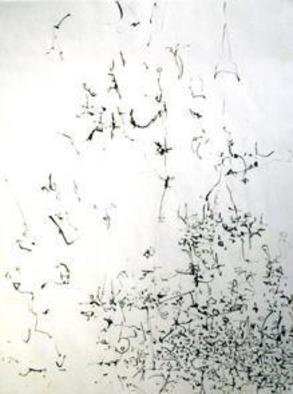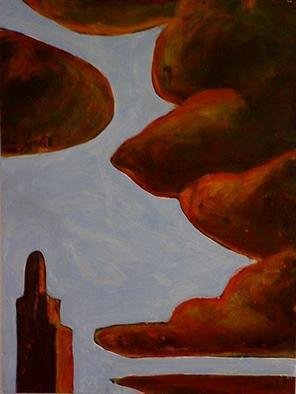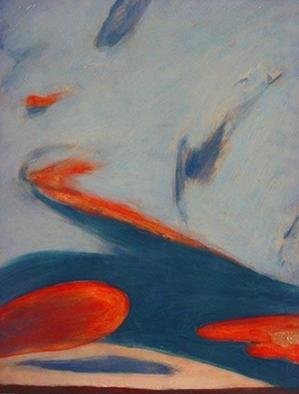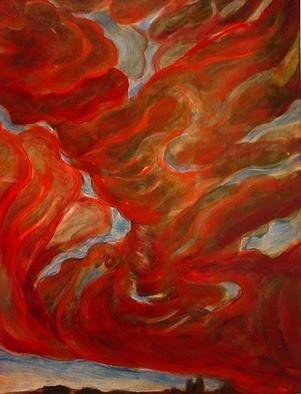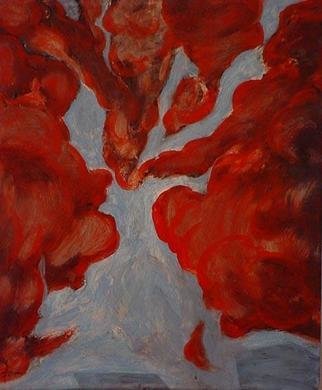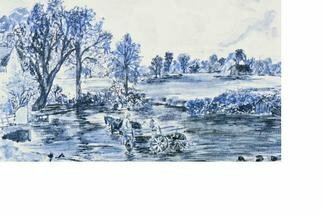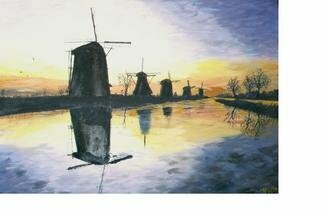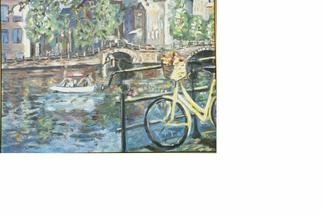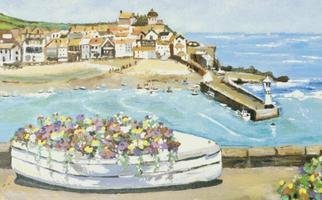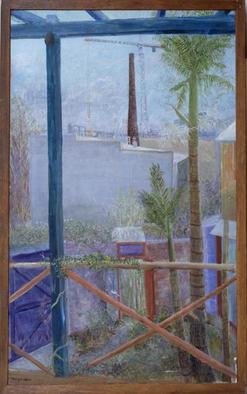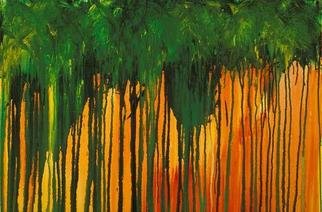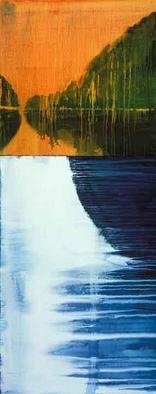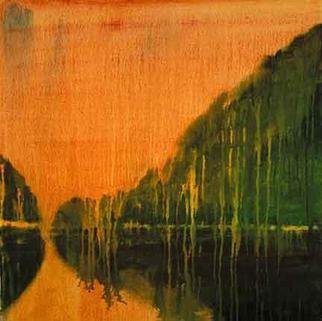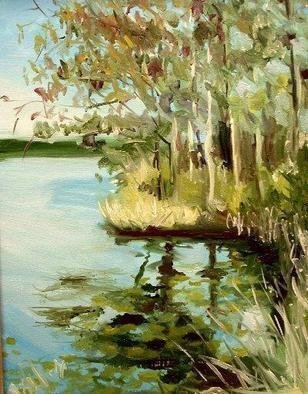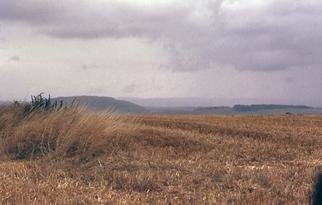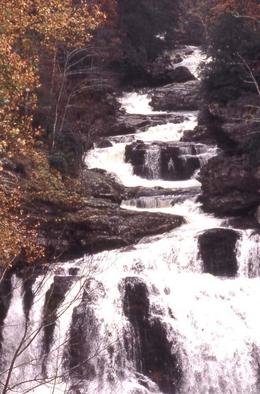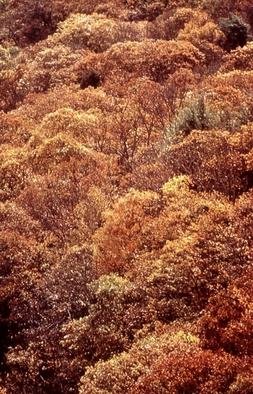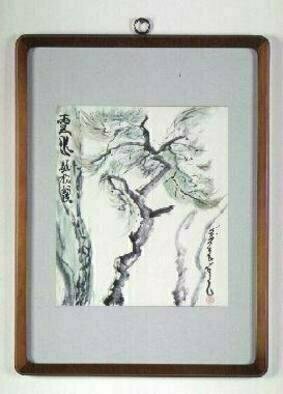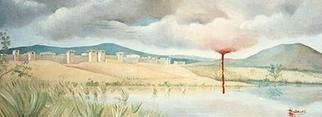Landscape Art For Sale
Page 9 of 166

Browse 4790 Landscape artworks for sale. Contemporary artists: Wayne Wilcox, Micha Nussinov, Youri Messen-jaschin, Richard Lazzara, Tom Irizarry Studio, Jacqueline Weegels, George Oommen, Paula Durbin, Kichung Lizee, Shoshannah Brombacher offering Landscape artworks. Links to more artworks by these contemporary artists and 166 pages for and further artists at the bottom of this page. To view a work by any of these contemporary artists simply click on the image or browse the artist's portfolio. To buy any Landscape art simply click on the image to go to a more detailed page about this work of art.
MORE »
Micha Nussinov - Nussinov's Statement Oct 2012 Drifting, being transient, in between various states of body/mind, like when we travel physically and with our imagination, as in a 'waking dream'. My work represents a world of ambiguity and illusion, of recognized and abstracted scenes embedded as a tapestry of matter, illustrating different relationships. Somewhere in the process of creating artworks these worlds are mixed in an harmonious and conflicting manner, representing the contradiction and collision between languages and landscapes. At all times the viewer is challenged to unfold the mystery, to explore and discover. The works of art are created not through a planned process but rather the starting point is an impulse, a visual or musical trigger. These signals lure the me into the unknown territories where my intuition and inner vision leads to spontaneous discoveries. As a teenager my box camera was an excuse to drift away from trouble, to capture in a photo something, that was at the same time ambiguous and exciting. As a cinematographer/ director of documentaries from1976 to1980 I was acknowledged as an acute observer of people and an highly experimental filmmaker. I have been working in various fields of the arts, consistently for the ...
Youri Messen-Jaschin - Award 1963 1st Prize of contemporary engraving Center of Engraving Geneva MusA(c)e daEURtmart et daEURtmHistoire Geneva 1966 Grant of the Swedish state for study at the University of Gothenburg research in the textil in Op art 1969 USA Gould corporation 1st prize for the realization of a Op art sculpture 1970 2 nd prize for a textile work - electro-acoustic, University of Gothenburg 1971 1 st prize for a textile work - electro-acoustic, RAPhsska Museum Gothenburg 1985 Italiy Centro Studi e Ricerche delle Nazioni World Culture Award Statue of Victory 1985 1985 Centro Studi e Ricerche laEURtmAccademia daEURtmEuropa Diploma of Appointment of Academician of Europe for its cultural and professional activity 1986 Diploma European SchowmenaEURtms Union For his sincere efforts on behalf of the European ShowmenaEURtms Union we hereby extend our special appreciation to. Bruxelles IV73 1987 Diploma of nomination Golden Elephant for the merits that he acquired to the cause of the circus Schweizer National Circus GebrA1/4der Knie Rapperswil 1998 Installation Award Certificate of Merit Research in Op art Angel Orensanz Foundation, Center for the arts, New York 2000 Aim for Arts, International juried exhibition, celebrating artistic achievement Federation of ...
Tom Irizarry Studio - Oil painter with broad knowledge of historic methods and historic colors. My studio is my laboratory. I make all my paint. My work focuses on elements of the earth air and land. What I observe is beyond a pretty sky or nice landscape. It is the notion that our earth and the universe, are imbued with a specific energy. Historically, this energy was described by the Victorian poet Gerard Manley Hopkins as Instress and Inscape, derived from ideas of the medieval philosopher, Duns Scotus. Scotus argued that there is some matter entirely devoid of form. Paintings can vary from 9 x 12 inches to 6 x 8 feet. Viewers describe a profound feeling from the paintings, regardless of the size. Specialties Historic processes for paint making, mediums, grounds, oils, mineral pigments, oil mediums, tempera mediums, non-silver processes cyanotypes and archival digital pigment prints....
Jacqueline Weegels - My whole life I have created art somehow, as do most people one way or another. I grew up with a father who enjoyed painting large theater back drops and making larger than life papermache float creations. Although, I felt inspired by this, it somehow intimidated me and made me want to work small. Now, having raised two children, and influenced and been influenced by them and THEIR art, my work has become ever more eclectic and varied. I am ready for a new phase in my art as, like everyone else, continue to conquer new challenges in life, stay healthy and seek balance. ...
George Oommen - George Oommen: The Image as the key Born in Munnar, Kerala, India, and educated in India, Mexico, and the United States, George Oommen continues to derive artistic inspiration from the lush green landscapes of his homeland. Every winter, Oommen visits Mankotta, a small island in the inland waters of Kerala in southwestern India, ten miles from Oommen's ancestral home. The weeks spent there fuel his painting year round. What follows is a series of questions and answers by Oommen about his work. The conversation took place over a series of days but reflects a lifetime of thinking about the meaning of his art. Q: What is the goal of your art? What inspires and motivates you as an artist? A: My painting is fundamentally about communicating what I see in my mind's eye. While verbal expression is the predominant form of communication, from early childhood, I have had a facility with visual expression. Painting is my vehicle for this. The specific goal of my art changes with each series I embark upon, but the general objective is always to transfer the image in my mind to the canvas There are many sources of inspiration for me--it could ...
Paula Durbin - Photography has always captured my spirit. It was only natural that my creative "release" be expressed through the same medium. But, because I am a unique spirit, it had to have other levels of creativity - the photo itself just wasn't enough. My first creative approach to photography was the use of the Polaroid transfer technique. My work consisted of subjects that are still close to me: animals and nature. The technique suited me well; it expresses the selected image seen and it allows me to further express its beauty with the softness of the technique. The watercolor paper used brings yet another dimension to the image. A search for the true expression in my photography led me to explore the techniques of the Fresson family of photographers. The Fresson technique, which culminates in the special care given the developmental process and the paper used, presented me the opportunity to express the richness of my photography. My work now moves beyond that 'moment' and presents a depth and richness perhaps not otherwise felt. I am honored to be a part of the Fresson family. There are only a limited number of artists with whom I share this honor. Having gone ...
Kichung Lizee - After coming to this country from Korea in the mid 60's to study art, among the many forms of Western art that I was introduced to, Abstract Expressionism interested me most. Currently I am in the process of synthesizing Eastern and Western approaches to art. Specifically, I'm adopting the techniques and materials of Eastern calligraphy to Western thematic material, my primary goal being to close the gap between East and West and reach for universal creativity. Eastern calligraphy I learned is a living and breathing spirit, rather than the dead and rigid tradition of thousands of years. It is uniquely a form that conveys the pulsation of life energy. Through it, one can experience all aspects of the living spectrum. Eastern calligraphic form reveals the kind of life the artist has led, as well as foreshadowing the person one will become. It is the art form that manifests the self as a way of life or philosophy of life. It is a powerful art form that operates through direct intuition. As an artist I rely heavily on creative intuition. Moving with changes in the stream of consciousness, my creative intuition somehow brings out the subconscious and superconscious through ...
Shoshannah Brombacher - Art makes the world within the artist visible. Classical music, poetry, Jewish and Chassidic stories, traveling, the love for people and memories of eras gone but not forgotten, cities where I lived and worked, like Amsterdam, Berlin, Jerusalem, New York, or visited, like Prague and Sicily, are the main ingredients of my art. My art is like the water of the canals of my native Amsterdam, Rembrandts city, the deeper you look into it, the more you see. A reflection of a reflection of a reflection...look, what you see is not what you see. My art contains texts and letters, lets writing come alive, and reflects my deep connection with the Dutch 17th century Masters, German expressionism, Russian art and medieval miniatures. My art is also a tribute to music and the world of the great Chassidic masters of Eastern Europe. The Kotzker Rebbe listened to a Chassidic storyteller in the street and stated He told what he wanted and I heard what I needed. That is Art. ...
(Page 9 of 166) - MORE ARTWORKS
Artists Describing Their Art:
Wayne Wilcox - ArtistaEURtms statements have always seemed redundant to me. The work generally speaks for itself. But here goes.. For me itaEURtms about shapes, color and lines interacting and relating to each other. Representational, abstract, non-objective theyaEURtmre all the same. Light against dark, color against color, line intersecting line. IaEUR~m as comfortable with super realism as I am with abstract expressionism. Then, of course, thereaEURtms the medium. I love the paint. I love the act of painting. I love how it flows and how it takes on a direction on itaEURtms own. ItaEURtms like magic. With one stroke something appears before your eyes that wasnaEURtmt there before. An image. An emotion. With each stroke or drip it changes. ItaEURtms an amazing experience. I highly recommend it. And then thereaEURtms image. I am a visual artist. IaEUR~m after strong images, images that evoke a feeling. Starkness, warmth, love, violence, emptiness, beauty, strength. I want the painting or drawing to stand on itaEURtms own. I am a painter. I cannot escape that fact. There have been times IaEUR~ve tried but I always return. ItaEURtms not what I do. ItaEURtm...Micha Nussinov - Nussinov's Statement Oct 2012 Drifting, being transient, in between various states of body/mind, like when we travel physically and with our imagination, as in a 'waking dream'. My work represents a world of ambiguity and illusion, of recognized and abstracted scenes embedded as a tapestry of matter, illustrating different relationships. Somewhere in the process of creating artworks these worlds are mixed in an harmonious and conflicting manner, representing the contradiction and collision between languages and landscapes. At all times the viewer is challenged to unfold the mystery, to explore and discover. The works of art are created not through a planned process but rather the starting point is an impulse, a visual or musical trigger. These signals lure the me into the unknown territories where my intuition and inner vision leads to spontaneous discoveries. As a teenager my box camera was an excuse to drift away from trouble, to capture in a photo something, that was at the same time ambiguous and exciting. As a cinematographer/ director of documentaries from1976 to1980 I was acknowledged as an acute observer of people and an highly experimental filmmaker. I have been working in various fields of the arts, consistently for the ...
Youri Messen-Jaschin - Award 1963 1st Prize of contemporary engraving Center of Engraving Geneva MusA(c)e daEURtmart et daEURtmHistoire Geneva 1966 Grant of the Swedish state for study at the University of Gothenburg research in the textil in Op art 1969 USA Gould corporation 1st prize for the realization of a Op art sculpture 1970 2 nd prize for a textile work - electro-acoustic, University of Gothenburg 1971 1 st prize for a textile work - electro-acoustic, RAPhsska Museum Gothenburg 1985 Italiy Centro Studi e Ricerche delle Nazioni World Culture Award Statue of Victory 1985 1985 Centro Studi e Ricerche laEURtmAccademia daEURtmEuropa Diploma of Appointment of Academician of Europe for its cultural and professional activity 1986 Diploma European SchowmenaEURtms Union For his sincere efforts on behalf of the European ShowmenaEURtms Union we hereby extend our special appreciation to. Bruxelles IV73 1987 Diploma of nomination Golden Elephant for the merits that he acquired to the cause of the circus Schweizer National Circus GebrA1/4der Knie Rapperswil 1998 Installation Award Certificate of Merit Research in Op art Angel Orensanz Foundation, Center for the arts, New York 2000 Aim for Arts, International juried exhibition, celebrating artistic achievement Federation of ...
Tom Irizarry Studio - Oil painter with broad knowledge of historic methods and historic colors. My studio is my laboratory. I make all my paint. My work focuses on elements of the earth air and land. What I observe is beyond a pretty sky or nice landscape. It is the notion that our earth and the universe, are imbued with a specific energy. Historically, this energy was described by the Victorian poet Gerard Manley Hopkins as Instress and Inscape, derived from ideas of the medieval philosopher, Duns Scotus. Scotus argued that there is some matter entirely devoid of form. Paintings can vary from 9 x 12 inches to 6 x 8 feet. Viewers describe a profound feeling from the paintings, regardless of the size. Specialties Historic processes for paint making, mediums, grounds, oils, mineral pigments, oil mediums, tempera mediums, non-silver processes cyanotypes and archival digital pigment prints....
Jacqueline Weegels - My whole life I have created art somehow, as do most people one way or another. I grew up with a father who enjoyed painting large theater back drops and making larger than life papermache float creations. Although, I felt inspired by this, it somehow intimidated me and made me want to work small. Now, having raised two children, and influenced and been influenced by them and THEIR art, my work has become ever more eclectic and varied. I am ready for a new phase in my art as, like everyone else, continue to conquer new challenges in life, stay healthy and seek balance. ...
George Oommen - George Oommen: The Image as the key Born in Munnar, Kerala, India, and educated in India, Mexico, and the United States, George Oommen continues to derive artistic inspiration from the lush green landscapes of his homeland. Every winter, Oommen visits Mankotta, a small island in the inland waters of Kerala in southwestern India, ten miles from Oommen's ancestral home. The weeks spent there fuel his painting year round. What follows is a series of questions and answers by Oommen about his work. The conversation took place over a series of days but reflects a lifetime of thinking about the meaning of his art. Q: What is the goal of your art? What inspires and motivates you as an artist? A: My painting is fundamentally about communicating what I see in my mind's eye. While verbal expression is the predominant form of communication, from early childhood, I have had a facility with visual expression. Painting is my vehicle for this. The specific goal of my art changes with each series I embark upon, but the general objective is always to transfer the image in my mind to the canvas There are many sources of inspiration for me--it could ...
Paula Durbin - Photography has always captured my spirit. It was only natural that my creative "release" be expressed through the same medium. But, because I am a unique spirit, it had to have other levels of creativity - the photo itself just wasn't enough. My first creative approach to photography was the use of the Polaroid transfer technique. My work consisted of subjects that are still close to me: animals and nature. The technique suited me well; it expresses the selected image seen and it allows me to further express its beauty with the softness of the technique. The watercolor paper used brings yet another dimension to the image. A search for the true expression in my photography led me to explore the techniques of the Fresson family of photographers. The Fresson technique, which culminates in the special care given the developmental process and the paper used, presented me the opportunity to express the richness of my photography. My work now moves beyond that 'moment' and presents a depth and richness perhaps not otherwise felt. I am honored to be a part of the Fresson family. There are only a limited number of artists with whom I share this honor. Having gone ...
Kichung Lizee - After coming to this country from Korea in the mid 60's to study art, among the many forms of Western art that I was introduced to, Abstract Expressionism interested me most. Currently I am in the process of synthesizing Eastern and Western approaches to art. Specifically, I'm adopting the techniques and materials of Eastern calligraphy to Western thematic material, my primary goal being to close the gap between East and West and reach for universal creativity. Eastern calligraphy I learned is a living and breathing spirit, rather than the dead and rigid tradition of thousands of years. It is uniquely a form that conveys the pulsation of life energy. Through it, one can experience all aspects of the living spectrum. Eastern calligraphic form reveals the kind of life the artist has led, as well as foreshadowing the person one will become. It is the art form that manifests the self as a way of life or philosophy of life. It is a powerful art form that operates through direct intuition. As an artist I rely heavily on creative intuition. Moving with changes in the stream of consciousness, my creative intuition somehow brings out the subconscious and superconscious through ...
Shoshannah Brombacher - Art makes the world within the artist visible. Classical music, poetry, Jewish and Chassidic stories, traveling, the love for people and memories of eras gone but not forgotten, cities where I lived and worked, like Amsterdam, Berlin, Jerusalem, New York, or visited, like Prague and Sicily, are the main ingredients of my art. My art is like the water of the canals of my native Amsterdam, Rembrandts city, the deeper you look into it, the more you see. A reflection of a reflection of a reflection...look, what you see is not what you see. My art contains texts and letters, lets writing come alive, and reflects my deep connection with the Dutch 17th century Masters, German expressionism, Russian art and medieval miniatures. My art is also a tribute to music and the world of the great Chassidic masters of Eastern Europe. The Kotzker Rebbe listened to a Chassidic storyteller in the street and stated He told what he wanted and I heard what I needed. That is Art. ...
